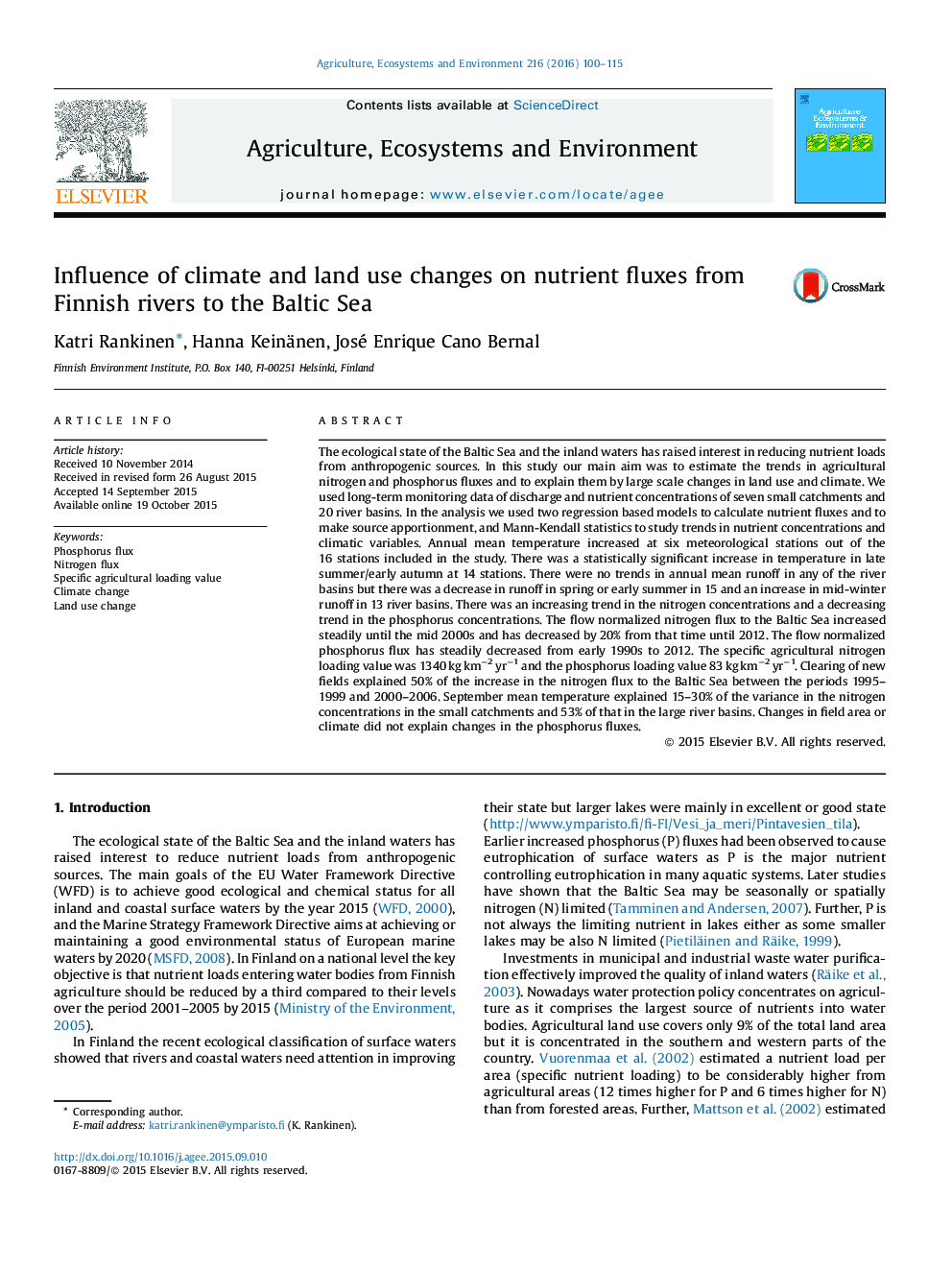| Article ID | Journal | Published Year | Pages | File Type |
|---|---|---|---|---|
| 2413631 | Agriculture, Ecosystems & Environment | 2016 | 16 Pages |
•We studied trends in climate and agricultural nutrient transport from 20 Finnish river basins.•We found increase in seasonal temperatures and decrease in summer runoff.•We found increase in N and decrease in P concentrations.•P load decreased steadily by 20% but N load started to decrease only in last years.
The ecological state of the Baltic Sea and the inland waters has raised interest in reducing nutrient loads from anthropogenic sources. In this study our main aim was to estimate the trends in agricultural nitrogen and phosphorus fluxes and to explain them by large scale changes in land use and climate. We used long-term monitoring data of discharge and nutrient concentrations of seven small catchments and 20 river basins. In the analysis we used two regression based models to calculate nutrient fluxes and to make source apportionment, and Mann-Kendall statistics to study trends in nutrient concentrations and climatic variables. Annual mean temperature increased at six meteorological stations out of the 16 stations included in the study. There was a statistically significant increase in temperature in late summer/early autumn at 14 stations. There were no trends in annual mean runoff in any of the river basins but there was a decrease in runoff in spring or early summer in 15 and an increase in mid-winter runoff in 13 river basins. There was an increasing trend in the nitrogen concentrations and a decreasing trend in the phosphorus concentrations. The flow normalized nitrogen flux to the Baltic Sea increased steadily until the mid 2000s and has decreased by 20% from that time until 2012. The flow normalized phosphorus flux has steadily decreased from early 1990s to 2012. The specific agricultural nitrogen loading value was 1340 kg km−2 yr−1 and the phosphorus loading value 83 kg km−2 yr−1. Clearing of new fields explained 50% of the increase in the nitrogen flux to the Baltic Sea between the periods 1995–1999 and 2000–2006. September mean temperature explained 15–30% of the variance in the nitrogen concentrations in the small catchments and 53% of that in the large river basins. Changes in field area or climate did not explain changes in the phosphorus fluxes.
